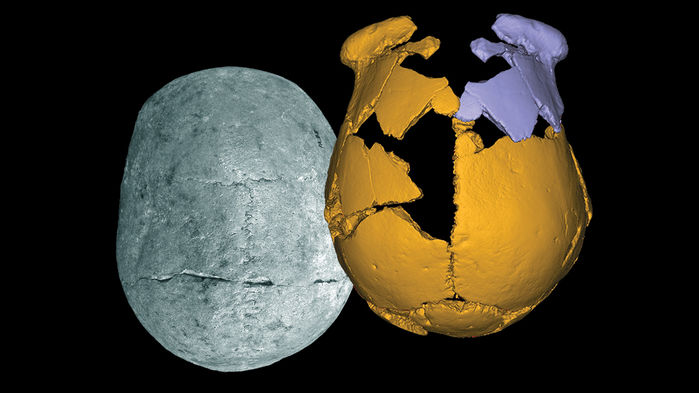
Newly uncovered skulls in China have both human and Neanderthal features, a mix that so far hasn’t been seen in a hominid fossil.
Writing in the journal Science, researchers described the Pleistocene-era skulls as having “a morphological mosaic with differences from and similarities to their western contemporaries.” The brow ridges and skull mass resembled early modern humans of the Old World, the skulls had a flat brainpan like other eastern Eurasian humans of the time, but their ear canals and large back section of the skull resembled Neanderthals, the Washington Post explains.
Some experts think these skulls belong to ice-age humans called Denisovans, Science Magazine reports. But Xiujie Wu, author of the study, speculated to the magazine that these partial skull fossils could be a new species, “a kind of unknown or new archaic human that survived on in East Asia to 100,000 years ago.”
These skulls aren’t the first evidence, however, that humans and Neanderthals may have mated. 1-3% of the average person is made up of Neanderthal genes, according to a 2014 study.
More Must-Reads from TIME
- Donald Trump Is TIME's 2024 Person of the Year
- Why We Chose Trump as Person of the Year
- Is Intermittent Fasting Good or Bad for You?
- The 100 Must-Read Books of 2024
- The 20 Best Christmas TV Episodes
- Column: If Optimism Feels Ridiculous Now, Try Hope
- The Future of Climate Action Is Trade Policy
- Merle Bombardieri Is Helping People Make the Baby Decision
Write to Tessa Berenson Rogers at tessa.Rogers@time.com